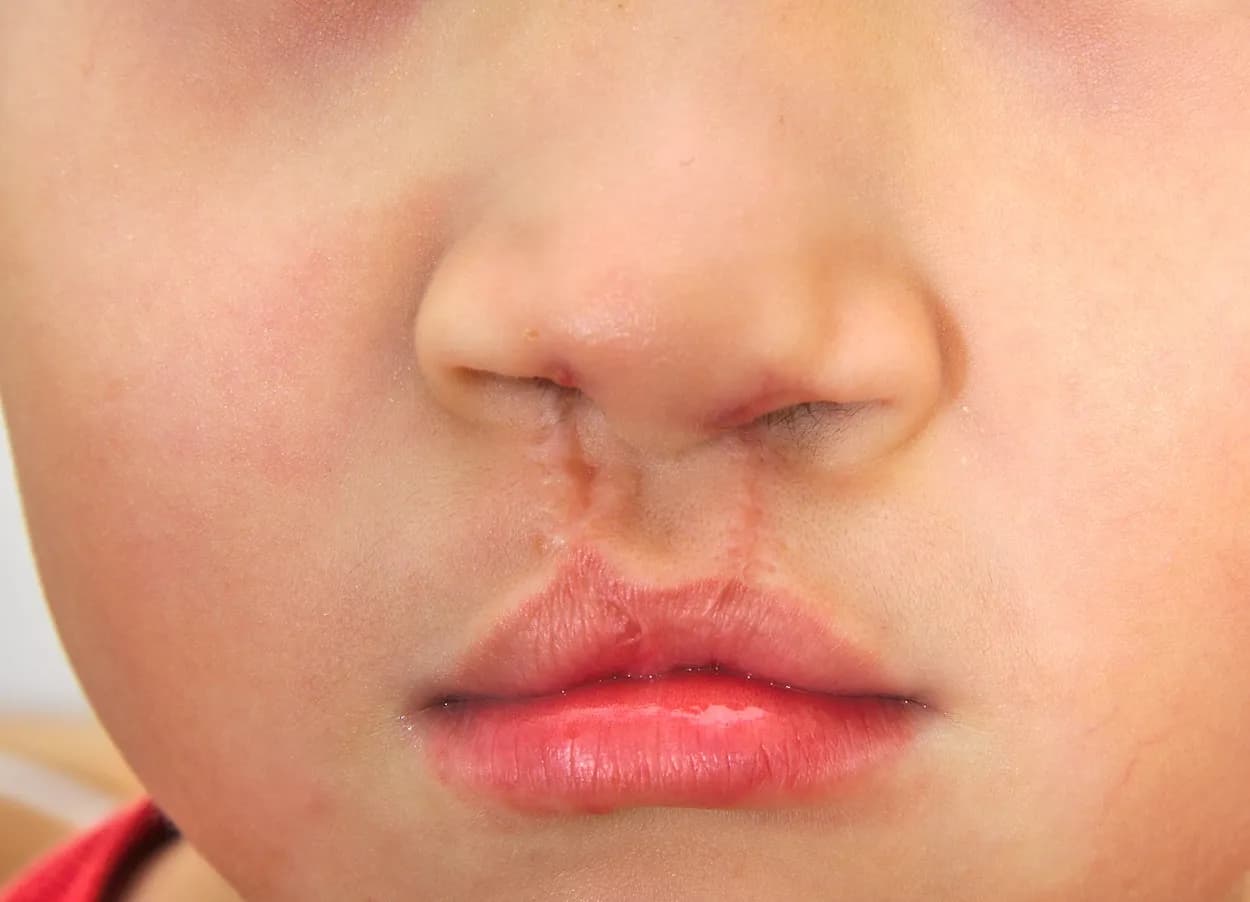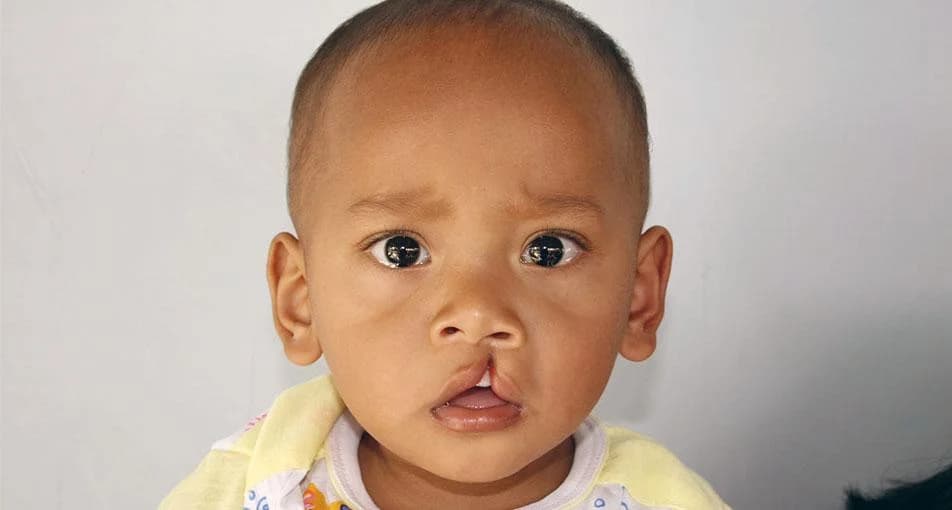A child born with a cleft lip or palate will need several treatments through the years; starting at 3 months old through teenage years. Surgery can fix the cleft lip or palate, but other treatments such as speech therapy and dental care may also be needed.
What is a Cleft Lip?
During the 4-7th months of pregnancy, a child’s lip will form. As a baby develops during pregnancy, body tissue and special cells from each side of the head grow toward the center of the face and join together to make the face. A cleft lip happens if the tissue that makes up the lip does not join completely before birth. A cleft lip may be a small slit or a large opening that goes through the lip into the nose. This can also be on one or both sides of the lip or the rare middle. Children with a cleft lip also can have a cleft palate.
Causes of Cleft Lip
A cleft lip may be caused by environmental and genetic reasons. Environmental factors that may contribute to cleft lip include:
Vitamin deficiency
Smoking during pregnancy
Substance abuse

What is Cleft Palate?
During the 6-9th months of pregnancy, the roof of the mouth (palate) is formed. If this tissue does not join together, a cleft palate is formed. In some cases, both the front and back parts of the palate are open, while in some only part of the palate is open.
Cheiloplasty treatment plan
Although for each child, their treatment plan will be tailored to their individual needs, a cheiloplasty care plan usually consists of:
Birth to 6 weeks: Feeding assistance, support for parents, hearing tests, and pediatric assessment
3 to 6 months: Surgery to repair a cleft lip
6 to 12 months: Surgery to repair a cleft palate
18 months: Speech assessment
3 years: Speech assessment
5 years: Speech assessment
8 to 12 years: Bone graft to repair a cleft in the gum area
12 to 15 years: Orthodontic treatment and monitoring jaw growth

Lip repair surgery
Cleft lip repair surgery aims to fix the split in the lips. This surgery is done when the baby is around 3 months old. For the surgery, a cut is made along the edges of the cleft lip extending up into the nose. Then stitches are used to re-approximate the muscles for the upper lip and bring the cut edges of the skin together to shape the upper lip and nostrils. The operation usually takes 1 to 2 hours. Most babies are in hospital for 1 to 2 days. The stitches will be removed after a few days or may dissolve on their own. It should fade and become less obvious over time.
Palate repair surgery
Cleft palate repair surgery aims to fix a separation in the roof of the mouth. This surgery is done when the baby is 6-12 months old. The surgeon will detach and rearrange the tissues on the roof of the mouth. Stitches are used to bring the left and right sides of the cleft together. The operation usually takes about 2 hours and is done using a general anesthetic. Most children are in hospital for 1 to 3 days.
What Problems are associated with Cleft Lip or Palate?
Eating problems: When a patient has an opening in their palate, food, and liquids can pass from the mouth back through the nose. There are specially designed baby bottles that keep fluids flowing downward toward the stomach. These children may need to wear some palate gear to ensure that they receive adequate nutrition until their surgery.
Ear infections/hearing loss: Children with cleft palates are at a higher risk of ear infection due to fluid build-up in their middle ear. These ear infections need to be treated since they can cause hearing loss. Children with cleft palate need to have their hearing checked once a year.
Speech problems: Since children with cleft lip or palate voice might not carry well or take on a nasal sound, their speech may be difficult to understand. These kids may need speech therapy to help with their difficulties.
Dental Problems: A child with clefts is at risk of missing, extra, malformed, or displaced teeth which requires dental and orthodontic treatments.

What are the benefits of cleft lip and cleft palate surgery?
Having cheiloplasty will help the child’s lip and mouth to function properly as well as lowering certain health risks. These children may be at risk of:
Frequent ear infections or fluid buildup behind their eardrum.
Trouble feeding, sucking, or swallowing.
Hearing loss.
Fluid coming out of their nose.
Speech delays.
Dental problems.
What are the risks or complications of cleft lip and palate repair?
Just as with any surgery, cheiloplasty surgery carries some risks. Although surgery to fix cleft lip and cleft palate is generally very safe, the most common risks include:
Bleeding
Infection
Reactions to anesthesia
Breathing problems
Surgery isn’t successful or more surgeries are needed
Conclusion
Cleft lip and cleft palate are common birth defects that affect the upper lip and the roof of the mouth. They can cause problems with feeding, speech, hearing, and appearance. Fortunately, these defects can be corrected with surgery and other treatments. The goals of treatment are to improve the child's ability to eat, speak, and hear normally and to achieve a normal facial appearance. Cleft lip and cleft palate surgery can significantly improve the child's quality of life, health, and self-esteem. With proper care and follow-up, most children with cleft lip and cleft palate can lead normal and fulfilling lives.